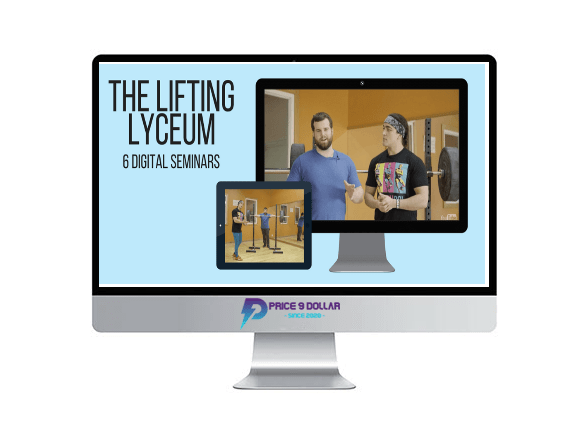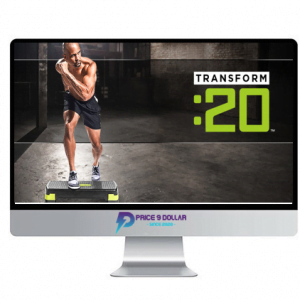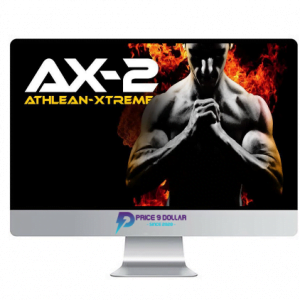Stronger By Science – Full Lifting Lyceum
$997.00 $9.00
Total Sold: 4
Sale Page : https://www.strongerbyscience.com/lifting-lyceum/
Stronger By Science – Full Lifting Lyceum Contents: Motion pictures, Pdfs
Description
Stronger By Science – Full Lifting Lyceum
Are you making fast progress in the gym?
Great, then don’t read what I’m about to say. For everyone else who is struggling…
So what’s the difference between stuck and un-stuck?
It’s simple: You must know how to optimize each lift and your training program for your own body and preferences.
Tweaking your form for a lift to make it optimal for your body can help you add weight to the bar RIGHT NOW. (I’ve seen dozens of clients PR immediately after I’ve given them a few pointers on this topic.)
And learning how to adjust your program based on what your body responds to will insure you ALWAYS have a way to keep making progress and being productive in the gym.
Learning to optimize each lift for your body, and learning to adjust your program based on what you best respond to: These 2 simple things are the difference between stuck and un-stuck, and often the difference between novice lifters and elite liters.
Easier said than done, though, right?
For me, learning the information needed to adjust programs and lifting technique took about 10 years. It took:
Committing myself to reading exercise science research 2 hours a day, every day for a decade.
Coaching dozens of athletes.
Trial-and-error with my own body and programming.
Talking with some of the best coaches in the world about these topics.
Now, that worked for me since I’ve made lifting and exercise science my full-time job. But you probably don’t have time for that.
I’ve condensed all that research, all that in-the-trenches experience both as an athlete and a coach, and all those conversations with other great coaches
If you want to do all the work for yourself, more power to you. It’s hard work. But, if you want to skip all that and learn everything you need to know right now, keep reading.
Questions we’ll answer:
Seminars 1, 2, and 3 give you practical tools to start adding weight to your lifts immediately.
The first three seminars are on the Big 3, the squat, bench, and deadlift. For each lift, we’ll talk about:
How to personalize your setup
Correcting technique flaws
Accessory movements
Bringing up weaknesses
Equipment
Cues
Warming up
Relevant anatomy and biomechanics
We’ll also discuss issues relevant to each lift, such as high bar vs. low bar vs. front squat on the squat, sumo vs. conventional on the deadlift, and different grip widths on the bench.
Seminars 4, 5, and 6 give you the tools for long-term progress: Work Capacity, Training and Programming for Hypertrophy, and Training and Programming for Strength
4. Work Capacity
Training more is usually better, if you can handle it. But what happens when you can no longer recover well enough to keep doing more, or when you simply get so worn out during your workouts that you can’t do more?
We’ll address:
Determining how much work you can do, and how much work you should be able to do
How much work you can recover from
How to increase work capacity
How to monitor recovery
How to transition back into training after a work capacity phase
5. Training and Programming for Hypertrophy
What causes hypertrophy? We’ll talk about tension, damage, and metabolic stress.
How important is volume for building muscle?
How do you find the right amount of volume for YOU?
Is sarcoplasmic hypertrophy real?
Should you train to failure?
Is whole body or body part split training better for muscle growth?
6. Training and Programming for Strength
In-depth discussion of periodization (it doesn’t mean what you think it does)
What are the correlations between muscle mass and powerlifting success?
What’s the best way to develop efficiency with the lifts?
How important is intensity in building strength?
How often should you lift, and what factors impact that decision?
How should you peak for a powerlifting meet?
How much do personal leverages impact strength?
SIZE: 8,7 GB
Delivery Policy
When will I receive my course?
You will receive a link to download your course immediately or within 1 to 21 days. It depends on the product you buy, so please read the short description of the product carefully before making a purchase.
How is my course delivered?
We share courses through Google Drive, so once your order is complete, you'll receive an invitation to view the course in your email.
To avoid any delay in delivery, please provide a Google mail and enter your email address correctly in the Checkout Page.
In case you submit a wrong email address, please contact us to resend the course to the correct email.
How do I check status of my order?
Please log in to Price9Dollar account then go to Order Page. You will find all your orders includes number, date, status and total price.
If the status is Processing: Your course is being uploaded. Please be patient and wait for us to complete your order. If your order has multiple courses and one of them has not been updated with the download link, the status of the order is also Processing.
If the status is Completed: Your course is ready for immediate download. Click "VIEW" to view details and download the course.
Where can I find my course?
Once your order is complete, a link to download the course will automatically be sent to your email.
You can also get the download link by logging into your Price9Dollar account then going to Downloads Page.










